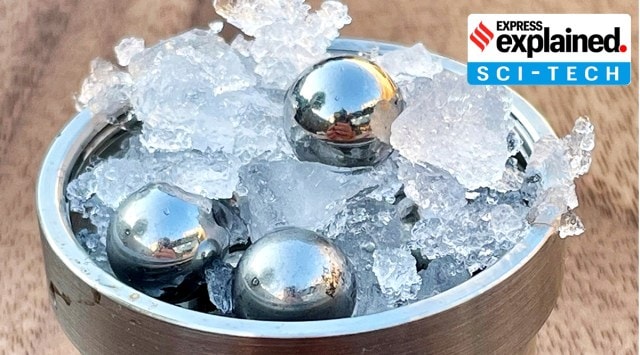A new kind of ice: ‘amorphous’ solid, water ‘frozen in time’
The findings were published on February 2 in Science (‘Medium-density amorphous ice’: Rosu-Finsen et al)
 Part of a ball-milling device, consisting of a jar into which ordinary crystalline ice and steel balls are placed before being shaken vigorously in an experiment to create a previously unrecognized form of ice, called medium-density amorphous ice, is seen at a laboratory at University College London in London. (Reuters)
Part of a ball-milling device, consisting of a jar into which ordinary crystalline ice and steel balls are placed before being shaken vigorously in an experiment to create a previously unrecognized form of ice, called medium-density amorphous ice, is seen at a laboratory at University College London in London. (Reuters) Scientists have created a new type of ice that matches the density and structure of water, perhaps opening a door to studying water’s mysterious properties.
The ice is called medium-density amorphous ice. The team that created it, led by Alexander Rosu-Finsen at University College London (UCL), shook regular ice in a small container with centimetre-wide stainless-steel balls at temperatures of (–) 200 °C to produce the variant, which has never been seen before. The ice appeared as a white granular powder that stuck to the metal balls.
The findings were published on February 2 in Science (‘Medium-density amorphous ice’: Rosu-Finsen et al).
Normally, when water freezes, it crystallizes and its molecules are arranged into the familiar hexagonal, solid structure that we call ice. Ice is less dense than its liquid form — an unusual property for a crystal. Depending on conditions such as pressure and the speed of freezing, water can also solidify in any of two dozen other regular arrangements. Amorphous ice is different: it has no such order.
If confirmed, the new form of ice could enable studies of water in a manner that was not possible before.
NATURE NEWS
- 01
- 02
- 03
- 04
- 05






































